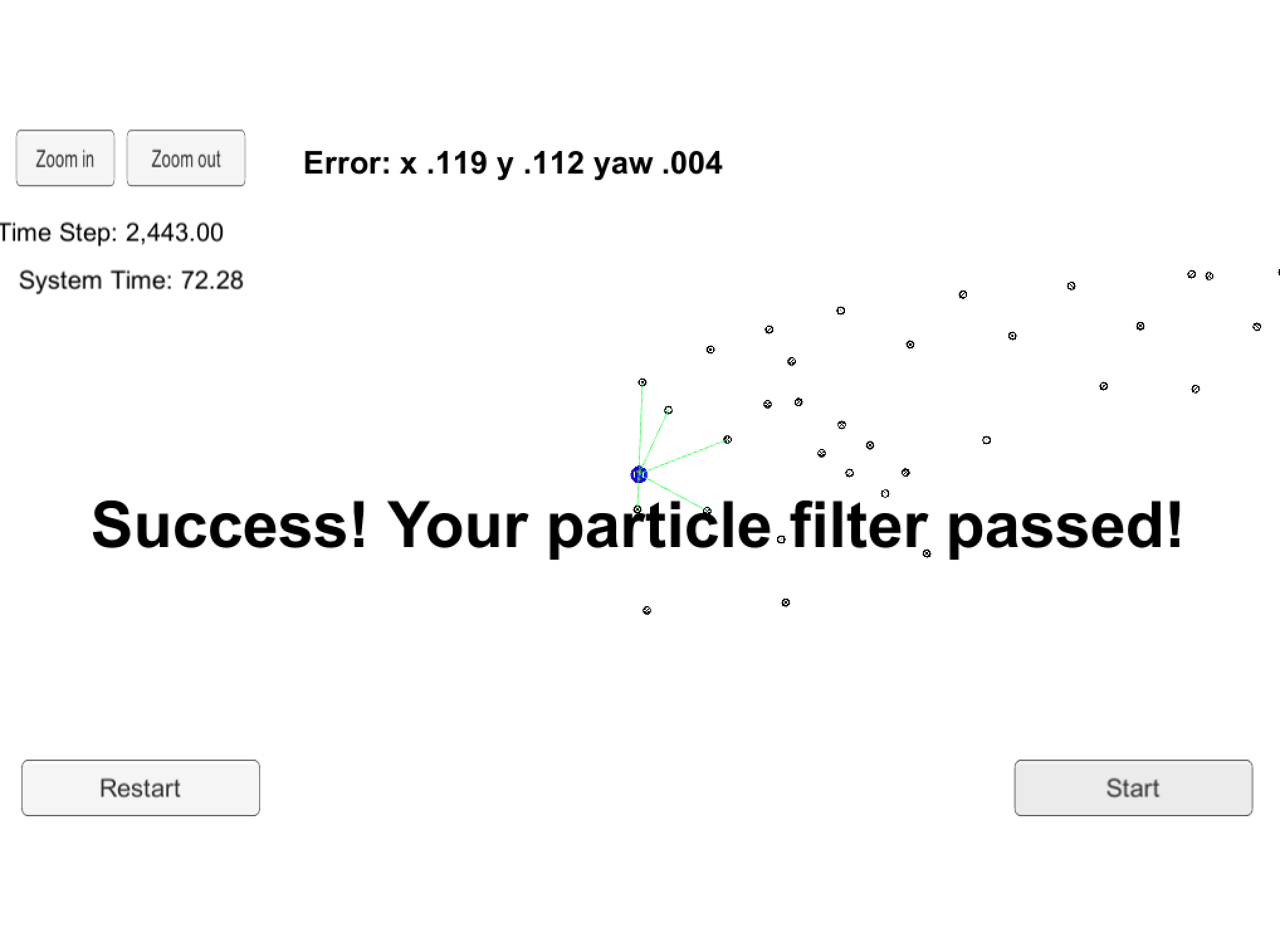The robot has been kidnapped and transported to a new location! Luckily it has a map of this location, a (noisy) GPS estimate of its initial location, and lots of (noisy) sensor and control data.
In this project, I implemented a 2 dimensional particle filter in C++. The map and some initial localization information is given (analogous to what a GPS would provide). At each time step your filter will also get observation and control data.
-
This project involves the Udacity Term2 Simulator which can be downloaded here
-
This repository includes two files that can be used to set up and install uWebSocketIO for either Linux or Mac systems. For windows you can use either Docker, VMware, or even Windows 10 Bash on Ubuntu to install uWebSocketIO.
Once the install for uWebSocketIO is complete, the main program can be built and ran by doing the following from the project top directory.
- Build particle filter project:
$ ./build.sh- Run particle filter
$ ./run.shHere is the main protocol that main.cpp uses for uWebSocketIO in communicating with the simulator.
Input values provided by the simulator to the c++ program:
// sense noisy position data from the simulator
["sense_x"]
["sense_y"]
["sense_theta"]
// get the previous velocity and yaw rate to predict the particle's transitioned state
["previous_velocity"]
["previous_yawrate"]
// receive noisy observation data from the simulator, in a respective list of x/y values
["sense_observations_x"]
["sense_observations_y"]
Output values provided by the c++ program to the simulator
// best particle values used for calculating the error evaluation
["best_particle_x"]
["best_particle_y"]
["best_particle_theta"]
//Optional message data used for debugging particle's sensing and associations
// for respective (x,y) sensed positions ID label
["best_particle_associations"]
// for respective (x,y) sensed positions
["best_particle_sense_x"] <= list of sensed x positions
["best_particle_sense_y"] <= list of sensed y positions
You can find the inputs to the particle filter in the data directory.
map_data.txt includes the position of landmarks (in meters) on an arbitrary Cartesian coordinate system. Each row has three columns
- x position
- y position
- landmark id
For fast searching nearest neighbor points I used nanoflann one header library. I wrote Map class to maintain heavy KNN requests to search nearest among all available landmarks on the 2D map .
Minimal time which I have gotten at Udacity track is 50 seconds on 2015's macbook laptop. This is quite impressive as naive approach O(n^3) gives very poor results (> 200 sec).
- Map data provided by 3D Mapping Solutions GmbH.
